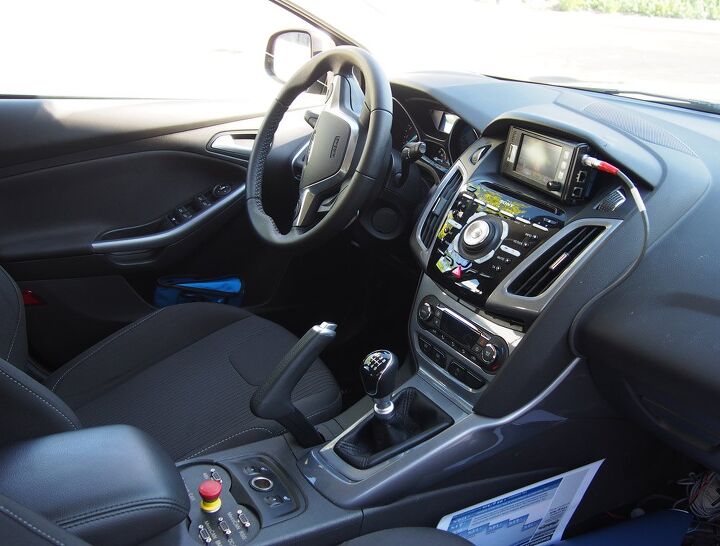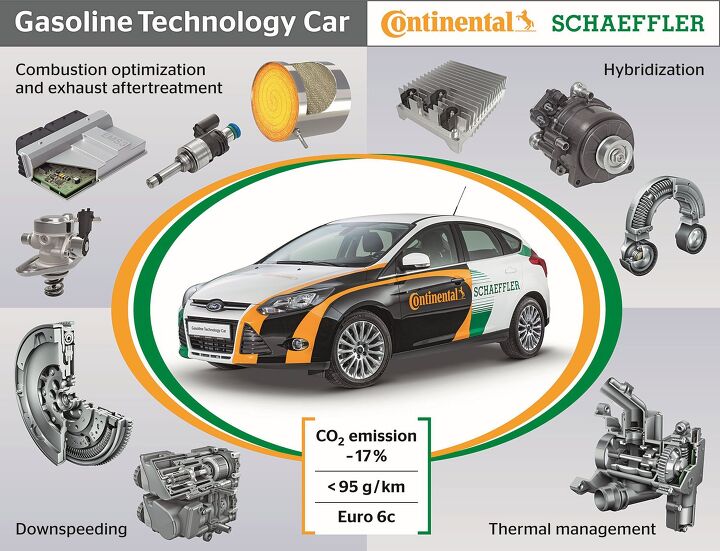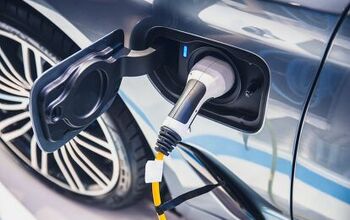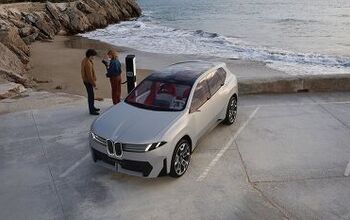Driving Continental's Ultra-Efficient Gasoline Technology Car

Gasoline Technology Car
Demonstrating the benefits of these advanced electronics, Continental augmented an unsuspecting Ford Focus hatchback with their 48-volt hardware, but that’s not all. One look under the hood reveals a bird’s nest of wires, tubing, hose clamps and hardware, a dead giveaway they did a lot more than add some mild-hybrid bits.
Of course the fuel-economy performance could have told you the same story and you wouldn’t have to get your hands dirty exploring the engine compartment. Overall this car’s efficiency has been improved 17 percent on the New European Driving Cycle (NEDC), which is a huge increase, though in real-world conditions it may do even better. As modified, the car complies with super-stringent Euro 6c emissions regulations, with fewer than 95 grams of CO2 released per kilometer.
The Focus they started with is equipped with Ford’s 1.0-liter, three-cylinder EcoBoost engine and six-speed manual transmission, a combination that made things challenging for Conti. “This is, I would say in terms of efficiency … a tough engine,” said Dr. Oliver Maiwald, senior vice president of technology and innovation. This is because it’s already so economical. Still, they did numerous things to cut fuel consumption, like optimizing combustion, reducing friction and enhancing the after-treatment system.
Thanks to its 48-volt eclectics and belt-driven starter/generator the car features engine stop/start, regenerative braking and “sailing” capability, which is cruising at a steady speed with the engine off and the electric motor providing forward propulsion. A 10-amp-hour battery powers the 48-volt system and stores extra energy during regenerative braking.
Clutch-by-Wire Technology
Since this car is equipped with a standard transmission, engineers also added an electrically operated clutch. This is part of “a joint collaboration with Schaeffler,” said Maiwald, another supplier company.
This unique assembly enables some special functionality. Since it’s powered by electrons it’s not directly connected to the pedal, instead “it is a clutch-by-wire system” said Simon Baensch, system technical project manager, powertrain technology and innovation at Continental.
Since the car can open and close the clutch on its own you can completely stop the vehicle without clutching; you can also take off without using the pedal, quite an unusual experience while driving.
This functionality means you could slog through rush-hour traffic without having to constantly pump the third pedal; the car will creep on its own. In addition to this, you can take off from a stop without using the clutch. You can even dump the clutch and it will still connect smoothly without stalling the engine, which is great for beginners who are just learning the idiosyncrasies of a manual transmission.
SEE ALSO: 48-Volt Energy Source Will Help Fuel Efficiency
When the engine is off, such as when you’re stopped at a red light, “the clutch is open and you can change gears,” said Baensch, no need to press the clutch. Not that you’d want to, but, “You can also start in second gear.” Just slide the shifter into the appropriate gate and depress the accelerator when ready to start moving; the car does the rest.
Test Drive
Aggressively letting off the clutch while taking off from a standstill resulted in a smooth, seamless launch. Through the magic of software, engineers can remap how aggressively the clutch operates for more aggressive performance, if desired.
This system’s integrated sailing functionality is equally intriguing. Under light loads when the small 48-volt battery was sufficiently charged, the internal-combustion engine would shut down and the car would cruise right along with minimal noise and zero fuel consumption. When more thrust was required the ICE would fire up seamlessly to provide additional acceleration.
Additionally, the electric motor can be used to provide a little extra boost when rapid acceleration is required. It can also power the car all on its own at low speeds for short distances, such as while driving in a parking lot.
Maiwald said that with a 48-volt electrical system a vehicle’s engine could be shut off between 20 and 25 percent of the time, which is huge. “In city cycle, I would say even more,” he added.
Going forward, Continental projects that by the year 2025 48-volt electrical systems will take 11 percent of the global market, which translates into an astronomically large number of vehicles. Given the smooth performance and fuel economy improvements, it’s not hard to understand why.
Check out our Tips and Advice section.

Born and raised in metro Detroit, Craig was steeped in mechanics from childhood. He feels as much at home with a wrench or welding gun in his hand as he does behind the wheel or in front of a camera. Putting his Bachelor's Degree in Journalism to good use, he's always pumping out videos, reviews, and features for AutoGuide.com. When the workday is over, he can be found out driving his fully restored 1936 Ford V8 sedan. Craig has covered the automotive industry full time for more than 10 years and is a member of the Automotive Press Association (APA) and Midwest Automotive Media Association (MAMA).
More by Craig Cole





































Comments
Join the conversation
clutch by wire sounds interesting. floor it and just move the stick up into 1st for a drag-launch
>>>>>>>>>>>